Self-support FAQs
Nemont customers can boost their signal strength by adjusting their carrier network settings to connect to other available networks. Changing your network settings can often improve a weak signal. Here’s how to manually select different carrier networks:
Changing Your Network Carrier Settings on an iPhone/iOS Device
While your phone is typically set to automatically select the best available network, manually switching to another carrier’s network in your area can lead to improved wireless coverage.
Tap Settings > Cellular

Under SIMs > Tap on your Phone Number

Tap on Network Selection >
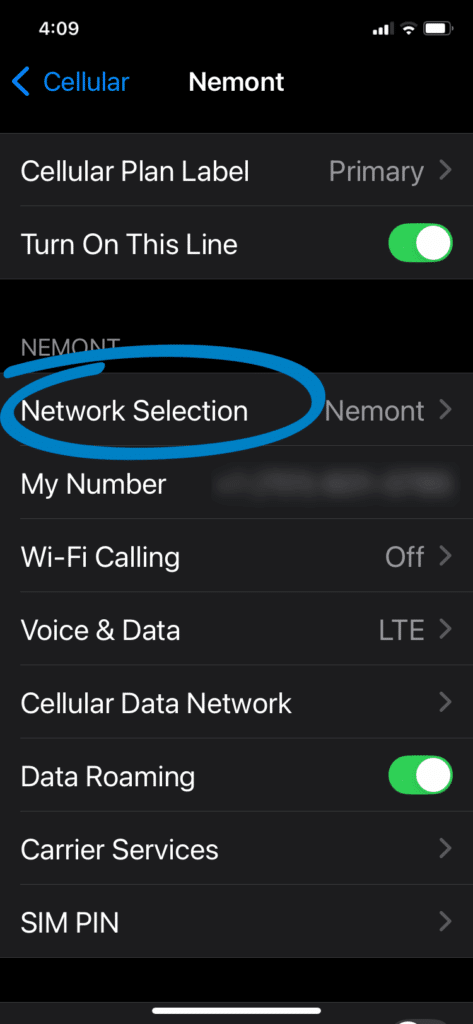
Under Network Selection > Toggle OFF Automatic
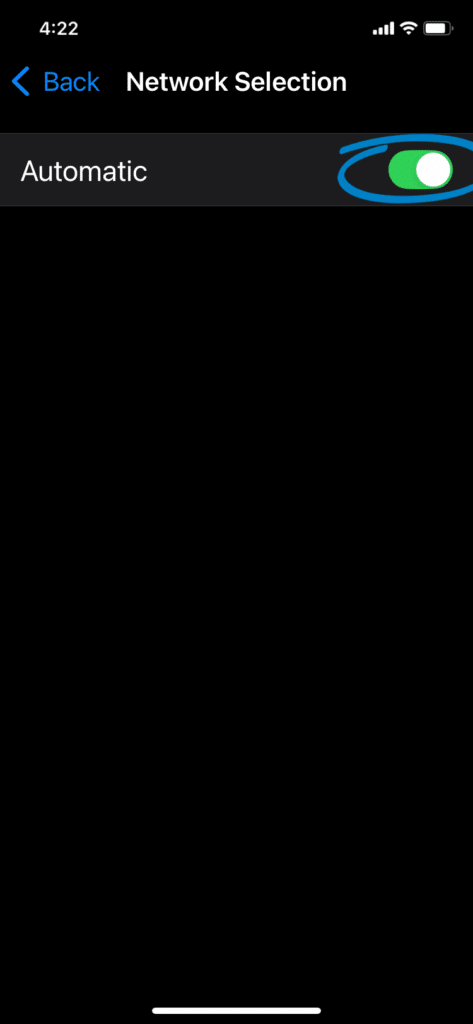
See nearby carriers and click on a different carrier to connect
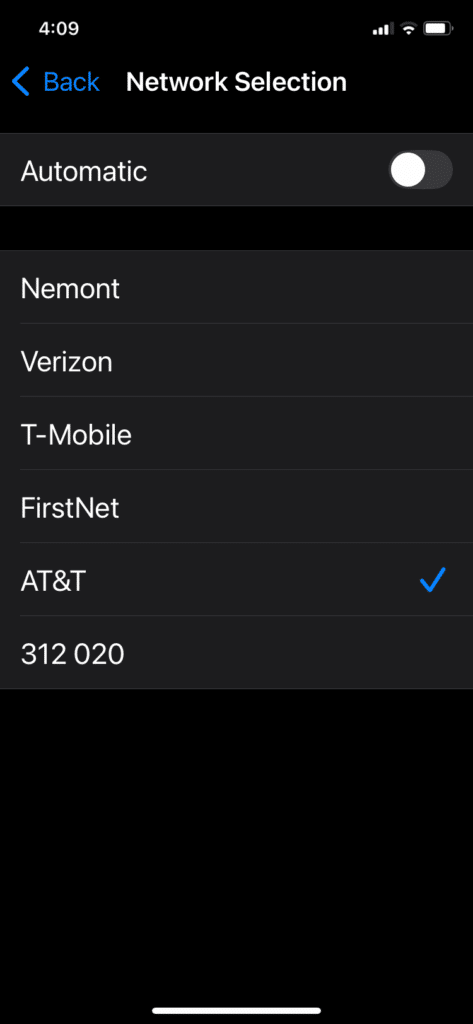
Changing Your Network Carrier Settings on an Android Device
Depending on the specific Android device you are using, these steps may differ somewhat.
Go into Settings > Click on Connections > Click on Mobile Networks

Click on Network Operators

Toggle OFF Select Automatically option to choose a different Network Operator
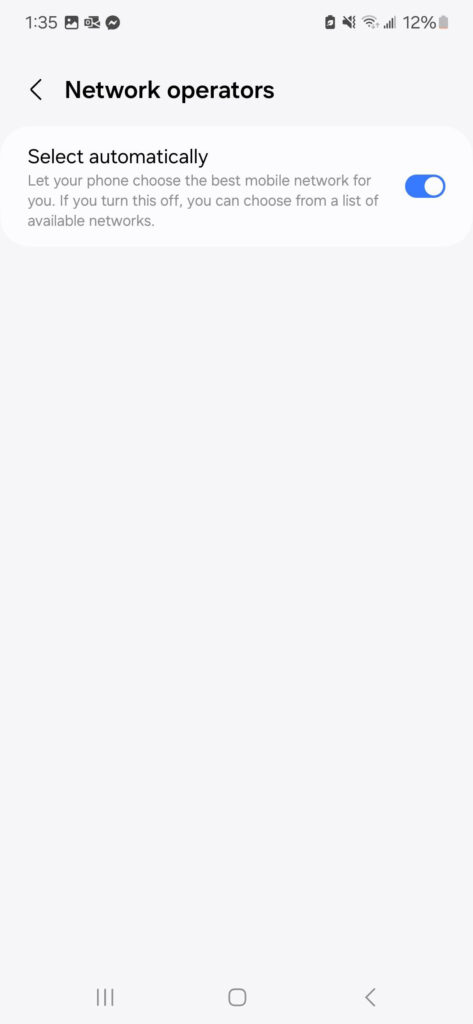
A list of Network Operators will populate for you to choose from.
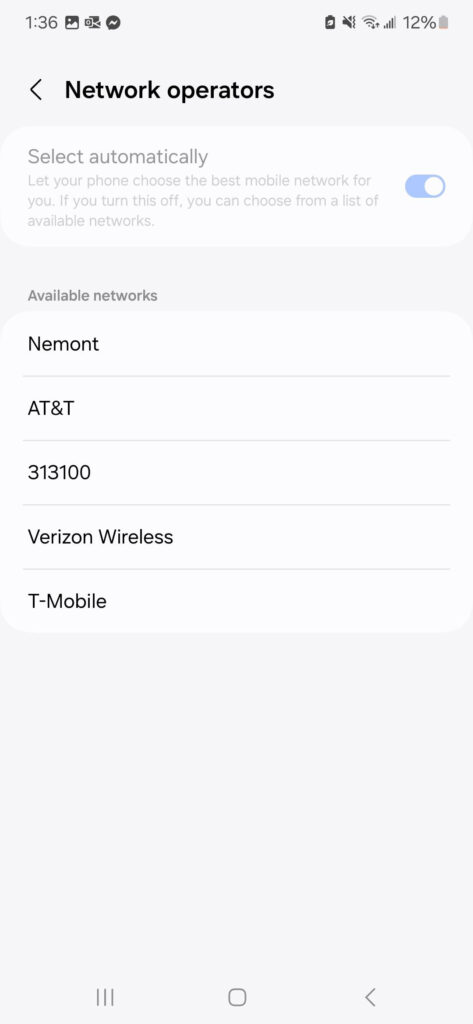
Retrieving voice mail from your wireless phone will use airtime. Long distance and roaming charges may apply if outside of the Nemont wireless network.
To Log In to Voice Mail
- Dial your wireless number. Press Send.
- If calling from outside of the Nemont wireless service area, you will need to dial 1 + area code + the seven digit number.
- Interrupt the Greeting by pressing the Star Key (*).
- Enter your password _______ and then press the Star Key (*).
To Change your Password
- Follow the steps to Log In to Voice Mail.
- Press 4 for Personal Options.
- Press 1 to Access Password.
- Key in the new password. Press the Star Key (*) when finished.
To Personalize Your Greeting
- Follow the steps to Log In to Voice Mail.
- Press 3 for Greetings.
- Press 1 to record greeting. Follow the voice prompts.
- Press Star Key (*) when finished.
To Listen to a Message
- Follow the steps to Log In to Voice Mail.
- Press 1. Follow the voice prompts.
- To exit, hang up.
While Listening to a Message
- Press 1 to go back ten seconds.
- Press 1 1 to go back to beginning of the current message.
- Press 3 to go forward ten seconds.
- Press 2 to hear Date and Time of the message.
After Listening to a Message
- Press 9 to save the message.
- Press 5 to delete the message.
- Press 6 to move to the next message.
User-Friendly Key Functions
- Press 7 for Pause.
- Press 8 for Help.
Some mobile phones are measured for compatibility with hearing aids. If the box for your particular model has “Rated for Hearing Aids” printed on it, the following explanation applies.
When some mobile phones are used near some hearing devices (hearing aids and cochlear implants), users may detect a buzzing, humming, or whining noise. Some hearing devices are more immune than others to this interference noise, and phones also vary in the amount of interference they generate.
The wireless telephone industry has developed ratings for some of their mobile phones, to assist hearing device users in finding phones that may be compatible with their hearing devices. Not all phones have been rated. Phones that are rated have the rating on their box or a label on the box.
The ratings are not guarantees. Results will vary depending on the user’s hearing device and hearing loss. If your hearing device happens to be vulnerable to interference, you may not be able to use a rated phone successfully. Trying out the phone with your hearing device is the best way to evaluate it for your personal needs.
M-Ratings: Phones rated M3 or M4 meet FCC requirements and are likely to generate less interference to hearing devices than phones that are not labeled. M4 is the better/higher of the two ratings.
T-Ratings: Phones rated T3 or T4 meet FCC requirements and are likely to be more usable with a hearing device’s telecoil (“T Switch” or “Telephone Switch”) than unrated phones. T4 is the better/higher of the two ratings. (Note that not all hearing devices have telecoils in them.)
Hearing devices may also be measured for immunity to this type of interference. Your hearing device manufacturer or hearing health professional may help you find results for your hearing device. The more immune your hearing aid is, the less likely you are to experience interference noise from mobile phones.
What does hearing aid compatibility (HAC) mean for wireless devices (e.g., Cell Phones)?
The Federal Communications Commission (FCC) defines HAC for wireless devices in terms of two parameters; radio-frequency (RF) emissions and telecoil coupling. Cell phones are tested to see if they comply with the FCC’s definition of hearing aid compatibility.
How will I know if a wireless device is rated for HAC?
Information about whether a wireless device is rated for HAC can be found in three places: 1) on information near devices in service provider operated retail stores, 2) on the packages containing wireless devices, and 3) in the product’s manual or packaging insert. HAC rated devices will be labeled with an “M” and/or “T” and a rating number. Only devices that are rated for HAC will be labeled in this way. If you see an “M3”, “M4″, “T4” or “T3” label on the display card or packaging then the device is HAC compliant. If you have questions about the rating of a wireless device, ask the service provider or device manufacturer for more information.
What does an “M3” or “M4” on the label mean?
“M” refers to the device’s RF emissions level, and means the device is intended for use with hearing aids in microphone mode. The higher the “M” rating number on the device, the more likely you will be able to use the device with your hearing aid on the microphone setting.
What does a “T3” or “T4” on the label mean?
“T” refers to the device’s telecoil coupling ability, and means the device is intended for use with hearing aids in telecoil mode. The higher the “T” rating number on the device, the more likely you will be able to use the device with your hearing aid on the telecoil setting.
What is a telecoil?
A telecoil is a small device that is built into some hearing aids for use with the telephone as well as assistive listening devices. To use the telecoil, generally either the hearing aid is switched to the “T” position or a button on the hearing aid is pushed to select the telecoil program. Some newer hearing aids will automatically switch to telecoil mode when using a phone. The telecoil picks up magnetic fields generated by telephones and converts these fields into sound. Telecoils are particularly useful for telephone communication because they permit the volume control of a hearing aid to be turned up without creating feedback or “whistling,” and background noise can be reduced especially when using cell phones in noisy places. To determine whether your hearing aid contains a telecoil and how it is activated, ask your hearing health professional.
What does hearing aid compatibility (HAC) mean for hearing aids?
Using the same measurement standard that wireless devices use to test for HAC, hearing aids can also be tested and rated for compatibility. This standard measures and rates the hearing aid’s immunity to the typical electromagnetic outputs from wireless devices. An M1 or T1 is the poorest immunity rating, and an M4 or T4 is the best immunity rating. Your hearing healthcare professional may assist you in determining if your hearing aid has been rated.
How do I know if my hearing aids will work with a particular cell phone?
If your hearing aid is rated for HAC like many wireless devices are, then there is a method for prediction: just add the rating of your hearing aid to the rating of the wireless device. A hearing aid rated M2 and a wireless device rated M3 combine to a give an M rating of 5 and would likely provide “normal” use. An M rating combination of 6 would likely provide “excellent performance.” The same would be true of T ratings. The higher the combination, the better the user experience is likely to be. Every individual’s hearing loss is unique so ratings do not guarantee performance.
Are there wireless devices I can use with my hearing aid on the telecoil setting?
Quite possibly. The FCC requires that wireless devices be rated for HAC specifically for hearing aids in telecoil mode. These devices are labeled with ratings of T3 or T4.
Do the HAC ratings guarantee that I will be able to use a cell phone with my hearing aid?
Wireless devices that are rated for Hearing Aid Compatibility (HAC) should improve usability for hearing aid users. However, because of the highly individualized nature of hearing loss and hearing aids there is no guarantee.
May I try a wireless device before I buy it?
Yes, it is advisable to try a wireless device with your hearing aid in the store before making a purchase. It’s best to try several devices before buying to find the best match with your hearing aids. Visit a full service carrier store and ask to try devices that have been designated as “hearing aid compatible.”
Who manufactures wireless devices that have been approved as HAC by the FCC?
All major handset manufacturers are required to offer HAC-compliant devices and may also offer hands-free accessories to improve usability.
Do HAC compliant wireless devices look any different from other devices?
No.
Does this information apply to cochlear implants also?
Cochlear implants are not regulated by the FCC and therefore are not rated. However, devices rated for HAC may make it more likely that a cochlear implant user will be able to use a cell phone with minimal interference either on the M or T setting. The same rule of thumb applies though – try before you buy. It’s best to try several phones before making your purchase to find the best match with your hearing aid.
Are devices rated for HAC more expensive than devices without hearing aid compatibility?
No, the range of features and functions of wireless devices will impact the price, but hearing aid compatibility will not. Service provider owned and operated stores will offer a range of devices with varying features and prices.
What if I cannot find a wireless device that works with my hearing aid?
You can check with your hearing healthcare professional to determine if there is a hearing aid option for you that may work better with wireless devices. Some telecoil users may find that accessories such as neckloops may further assist with their use of wireless devices.
How can I be “hands free” while using my wireless device?
Many states now require “hands free” driving while using wireless devices. If you use a telecoil, you may be able to use a neckloop. If you use the microphone mode in your hearing aid, you may be able to use the speaker phone function available on some wireless devices. If there is a Bluetooth accessory for your hearing aid, it may be able to work with Bluetooth enabled wireless devices. Remember safety first while driving.
What is ESIM?
A physical SIM card is a small plastic chip that is inserted into your cell phone. An eSIM is already embedded in your device. Like a physical SIM card, an eSIM securely connects you to your cellular network, granting you access to your cellular service and stores information like your contacts and phone number. An eSIM is just a virtual version of a SIM card and does everything a physical SIM card does. However, eSIMs do have a few advantages over physical cards, which we’ll explain a little later.
Is your phone eSIM compatible?
Not all phones are compatible with eSIM since it’s such a new technology. Currently Nemont supports eSIM for iPhones, but Androids are not yet supported. Below is a list of compatible phone models.
- iPhone 16 series
- iPhone 15 series
- iPhone 14 series
- iPhone 13 series
- iPhone 12 series
- iPhone 11 series
- iPhone XS and iPhone XS Max
- iPhone XR
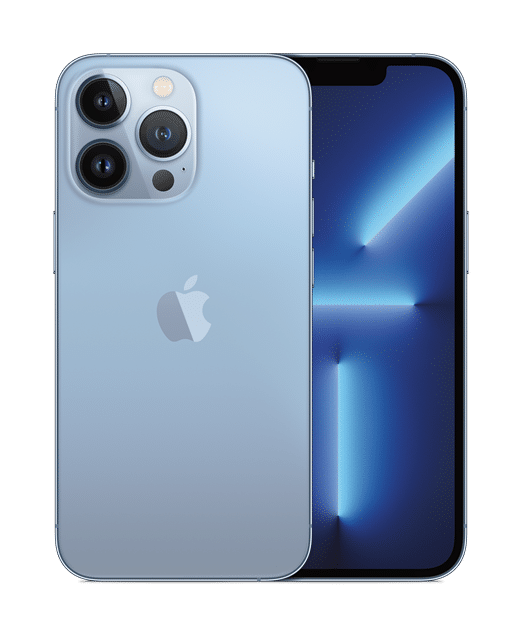
Benefits of an eSIM
- It’s easy to swap to a new carrier as the data on eSIMs can be reprogrammed (or, in some cases, can be downloaded onto another slot on the eSIM). Whereas physical SIM cards cannot be reprogrammed. This means with eSIMs you can more quickly switch to a new carrier.
- One of the biggest benefits of eSIM is that your phone can have two SIM cards (and thus two phone numbers) on one device. This can be beneficial for someone like a business owner that wants both a personal line as well as a business line and doesn’t want to carry around two phones.
- eSIMs are improving future devices. Without the need for a SIM tray, it’ll be possible to make thinner, lighter devices (ie: phones, tablets, laptops and wearable tech). Many believe eSIMs are the future, and it’s only a matter of time before physical SIM cards become obsolete
There are a couple things to consider before you choose to switch to an eSIM card:
- You can’t use an eSIM for older phones, since it’s such a new technology.
- If your phone is completely damaged or irreparable (ie: won’t turn on or the screen is no longer legible) you will not be able swap an eSIM from your damaged phone to a new phone.
Activating your Device with eSIM
Activating service is easy. To activate your eSIM device with Nemont you can stop in, chat, email us, or call us 1-800-636-6680.
- Connect your phone to a Wi-Fi Network.
- Contact Nemont and we will verify your account.
- A QR code is needed to complete eSIM activation. We will either email you a QR code or one of our friendly staff can assist you in the office.
- Scan the QR code that was sent to you using your device’s camera.
- It will take a few minutes for your device to activate. Once complete you can start using your new device.
- If for any reason your device does not activate, please call and we can assist you.
ESIM FAQs
What is an eSIM?
An eSIM is a digital SIM that eliminates the need for a physical SIM card. With eSIM, you can quickly and easily transfer an existing cellular plan or get a new cellular plan, all digitally. You can even store multiple eSIMs on the same device and use two phone numbers at the same time. And it’s more secure – someone can’t remove the physical SIM card if your iPhone is lost or stolen. In just a few simple steps, you are ready to make calls, send messages, and browse the web.
Which iPhone models support eSIM?
iPhone XS, iPhone XS Max, iPhone XR, or later support eSIM. If you purchased an iPhone 14 or iPhone 14 Pro model, your iPhone does not have a physical SIM tray, and will only activate with an eSIM.
How do I activate a Nemont eSIM on iPhone?
Activating an eSIM on an iPhone is easy. To activate your eSIM device with Nemont you can stop in, chat, email us, or call us (800) 636-6680.
- Connect your phone to a Wi-Fi Network.
- Contact Nemont and we will verify your account.
- A QR code is needed to complete eSIM activation. We will either email you a QR code or one of our friendly staff can assist you in the office.
- Scan the QR code that was sent to you using your device’s camera.
- It will take a few minutes for your device to activate. Once complete you can start using your new device.
- If for any reason your device does not activate, please call and we can assist you.
You can learn more about eSIM on iPhone here: https://support.apple.com/en-us/HT212780.
How do I transfer my phone number to my new iPhone 14?
To transfer your phone number to your new iPhone you will need to call Nemont at (800) 636-6680 or stop by one of our convenient retail locations.
How do I move my phone number from my Android device to an eSIM on my new iPhone 14?
If you’re switching to iPhone, you will need to call Nemont at (800) 636-6680 or stop by one of our convenient retail locations.
How do I activate an iPhone with eSIM if I don’t have access to a Wi-Fi network?
If you have an eSIM only iPhone 14 or iPhone 14 Pro model and you don’t have a Wi-Fi network, Apple has a new solution to activate your eSIM. During the Set-Up process, you can choose to continue without Wi-Fi. This allows you to setup your new eSIM without Wi-Fi —at no cost to you.
Are all Nemont customers able to use an eSIM on iPhone?
Yes, if their phone is eSIM capable. For devices that still offer a physical SIM slot, that method will still be preferred over eSIM for ease of use for the customer.
How do I get a Nemont eSIM if I am not purchasing my iPhone from Nemont?
This would require the same steps as activating an iPhone with Nemont stated above. You will need to gather the appropriate information and call customer service to have the eSIM activated and QR code generated.How do I know if my iPhone is unlocked?
- Go to Settings > General, and tap About.
- Under Carrier Lock, you should see a message that says “No SIM restrictions.” If you don’t see that message, contact your carrier.
Will activating an eSIM lock my iPhone to Nemont?
Your devices lock status is not impacted by the use of an eSIM. Nemont does not lock our iPhones. If you have an iPhone through another carrier and wish to use it with us, you will need to contact the carrier through which the iPhone was purchased for their locking policy.
What should I do if my iPhone is lost or stolen with an active eSIM?
If your iPhone with an active eSIM is lost or stolen, please call customer service at (800) 636-6680 as soon as possible so the eSIM can be deactivated.
What happens to my cellular plan if I erase my eSIM?
If you delete your eSIM, your cellular plan has not been cancelled. However, you would need to call customer service or visit a retail store to have a new eSIM provisioned for your device.
Can I still use my Nemont eSIM if I travel internationally?
Nemont currently does not support international traveling.
If I am traveling to United States from abroad, can I download a local eSIM on Nemont’s network?
Currently, to receive an eSIM you will need to contact us and select a cellular plan. Call us at (800) 636-6680 to chat with one of our local customer service representatives or stop by any of our convenient retail locations.
What is Dual SIM?
Dual SIM allows users to use two phone numbers at the same time. For example, you can use one number for business and another number for personal. Or you can add a local data plan when you travel outside of the country or region. You can learn more about Dual SIM with an eSIM here: https://support.apple.com/en-us/HT209044
Send a message to customer support
Hearing Aid Compatibility chart
Last Updated: 08/22/2019 – This information is courtesy of the CTIA–The Wireless Association® and ATIS Hearing Aid Compatibility Incubator.
| Make | Model | FCC ID | HAC Rating | Availability Date | Discontinue Date | Air Interface | Phone type |
|---|---|---|---|---|---|---|---|
| Alcatel | Go Flip 4044V | 2ACCJN013 | M4 | 11/27/17 | UMTS, 850MHz and 1900MHz | Feature | |
| Alcatel | 960C (One Touch) | RAD278 | M4, T3 | 1/21/13 | 1/1/14 | CDMA, 850MHz and 1900MHz | Smartphone |
| Apple | iPhone 11 | BCG-E3309A | M3, T4 | 4/1/14 | UMTS, 850MHz and 1900MHz | Smartphone | |
| Apple | iPhone 4S | BCG-E2430A | M3, T4 | 4/1/14 | 8/1/14 | CDMA, 850MHz and 1900MHz | Smartphone |
| Apple | iPhone 5C | BCG-E2644A | M3, T4 | 4/1/14 | 9/25/15 | CDMA, 850MHz and 1900MHz | Smartphone |
| Apple | iPhone 5S | BCG-E2642A | M3, T4 | 9/1/14 | 6/20/16 | CDMA, 850MHz and 1900MHz | Smartphone |
| Apple | iPhone 6 | BCG-E2816A | M3, T4 | 9/1/14 | 3/31/17 | CDMA, 850MHz and 1900MHz | Smartphone |
| Apple | iPhone 6 Plus | BCG-E2817A | M3, T4 | 9/25/15 | 12/12/16 | CDMA, 850MHz and 1900MHz | Smartphone |
| Apple | iPhone 6S | BCG-E2946A | M3, T4 | 9/25/15 | CDMA, 850MHz and 1900MHz | Smartphone | |
| Apple | iPhone 6S Plus | BCG-E2944A | M3, T4 | 11/10/16 | CDMA, 850MHz and 1900MHz | Smartphone | |
| Apple | iPhone 7 | BCG-E3091A | M3, T4 | 11/10/16 | 8/17/18 | UMTS, 850MHz and 1900MH | Smartphone |
| Apple | iPhone 7 Plus | BCG-E3087A | M3, T4 | 11/13/17 | 8/3/18 | UMTS, 850MHz and 1900MH | Smartphone |
| Apple | iPhone 8 | BCG-E3159A | M3, T4 | 10/13/17 | UMTS, 850MHz and 1900MH | Smartphone | |
| Apple | iPhone 8 Plus | BCG-E3160A | M3, T4 | 10/13/17 | UMTS, 850MHz and 1900MH | Smartphone | |
| Apple | iPhone SE | BCG-E2945A | M3, T4 | 5/31/16 | CDMA, 850MHz and 1900MHz | Smartphone | |
| Apple | iPhone X | BCG-E3161A | M3, T4 | 11/6/17 | 8/2/19 | UMTS, 850MHz and 1900MH | Smartphone |
| Apple | iPhone XS Max | BCG-E3219A | M3, T4 | 9/20/18 | UMTS, 850MHz and 1900MH | Smartphone | |
| Apple | iPhone XR | BCG-E3220A | M3, T4 | 10/24/18 | UMTS, 850MHz and 1900MH | Smartphone | |
| Apple | iPhone XS | BCG-E3218A | M3, T4 | 9/27/18 | UMTS, 850MHz and 1900MH | Smartphone | |
| CAT | S60 | ZL5S60 | M3, T4 | 9/21/17 | 12/18/18 | UMTS, 850MHz and 1900MHz | Smartphone |
| HTC | HTC ZARA 601 | NM80P4E100 | M3, T4 | 1/1/14 | 8/1/14 | CDMA, 850MHz and 1900MHz | Smartphone |
| Innos | MN8 | COYI6CP | M4 | 12/1/14 | 3/19/15 | CDMA, 850MHz and 1900MHz | Smartphone |
| Kyocera | Dura XA E4510 | V65E4520 | M4, T4 | 5/4/15 | CDMA, 850MHz and 1900MHz | Feature | |
| LG | AN272 (Converse) | ZNFAN272 | M4, T4 | 12/17/12 | 11/1/14 | CDMA, 850MHz and 1900MHz | Basic |
| LG | AN 170 Fluid II | ZNFVN170 | M4, T4 | 1/26/15 | CDMA, 850MHz and 1900MHz | Basic | |
| LG | AN160 (Fluid) | ZNFAN160 | M4 | 7/22/13 | 9/1/14 | CDMA, 850MHz and 1900MHz | Basic |
| LG | G5 | ZNFVS987 | M3, T3 | 2/16/17 | 5/7/18 | UMTS, 850MHz and 1900MHz | Smartphone |
| LG | K30 | ZNFL413DL | M3, T3 | 7/18/18 | UMTS, 850MHz and 1900MHz | Smartphone | |
| Motorola | XT556 (Defy XT) | IHDT56NC2 | M4, T3 | 10/29/12 | 3/1/14 | CDMA, 850MHz and 1900MHz | Smartphone |
| Motorola | XT861 (Milestone III) | IHDT56MF1 | M4, T3 | 11/5/12 | 3/1/14 | CDMA, 850MHz and 1900MHz | Smartphone |
| Motorola | XT1031 Moto G | IHDT56PF3 | M3,T4 | 5/1/14 | 8/10/15 | CDMA, 850MHz and 1900MHz | Smartphone |
| Motorola | XT1526 Moto E | IHDT56QC7 | M3, T3 | 8/10/15 | 4/10/17 | CDMA, 850MHz and 1900MHz | Smartphone |
| Motorola | XT908 (Razr Maxx) | IHDP56ME1 | M4, T3 | 12/17/12 | 2/1/14 | CDMA, 850MHz and 1900MHz | Smartphone |
| Samsung | Galaxy S6 (UMTS) | A3LSMG920T | M3, T3 | 9/15/15 | UMTS, 850MHz and 1900MHz | Smartphone | |
| Samsung | Galaxy S10 | A3LSMG973U | M4, T3 | 3/19/19 | UMTS, 850MHz and 1900MHz | Smartphone | |
| Samsung | Galaxy S10+ | A3LSMG975U | M4, T3 | 3/27/19 | UMTS, 850MHz and 1900MHz | Smartphone | |
| Samsung | Galaxy S10e | A3LSMG970U | M4, T3 | 3/22/19 | UMTS, 850MHz and 1900MHz | Smartphone | |
| Samsung | Galaxy S5 G900 | A3LSMG900R7 | M4, T4 | 6/1/14 | 3/3/17 | CDMA, 850MHz and 1900MHz | Smartphone |
| Samsung | Galaxy S8 | A3LSMG950U | M4, T4 | 6/13/17 | 11/23/18 | UMTS, 850MHz and 1900MHz | Smartphone |
| Samsung | Galaxy S9 | A3LSMG960U | M4, T3 | 4/13/18 | 7/23/19 | UMTS, 850MHz and 1900MHz | Smartphone |
| Samsung | Galaxy S9+ | A3LSMG965U | M4, T3 | 4/13/18 | UMTS, 850MHz and 1900MHz | Smartphone | |
| Samsung | J3 2016 | A3LSMJ320A | M3, T4 | 2/6/17 | 5/21/18 | UMTS, 850MHz and 1900MHz | Smartphone |
| Samsung | Note 9 | A3LSMN960U | M4, T3 | 10/3/18 | UMTS, 850MHz and 1900MHz | Smartphone | |
| Samsung | R270 (Chrono 2) | A3LSCHR270 | M4, T4 | 1/21/13 | 1/26/15 | CDMA, 850MHz and 1900MHz | Basic |
| Samsung | R530X (Galaxy S III) | A3LSCH1535 | M4 | 9/16/13 | 6/1/14 | CDMA, 850MHz and 1900MHz | Smartphone |
| Samsung | Galaxy A10E | A3LSMA102U | M3, T3 | 9/20/19 | UMTS, 850MHz and 1900MHz | Smartphone | |
| Samsung | Galaxy A20 | A3LSMA205U | M3, T3 | 9/20/19 | UMTS, 850MHz and 1900MHz | Smartphone | |
| Samsung | Galaxy A50 | A3LSMA505U | M3, T3 | 9/20/19 | UMTS, 850MHz and 1900MHz | Smartphone | |
| Samsung | Galaxy S6 G920 | A3LSMG920R7 | M4, T3 | 6/25/15 | 7/6/17 | CDMA, 850MHz and 1900MHz | Smartphone |
| Samsung | Galaxy S6 G925 | A3LSMG925R7 | M4, T3 | 7/20/15 | 9/19/17 | CDMA, 850MHz and 1900MHz | Smartphone |
| Samsung | Galaxy S7 (CDMA) | A3LSMG930US | M4, T3 | 4/22/16 | CDMA, 850MHz and 1900MHz | Smartphone | |
| Samsung | Galaxy S7 (UMTS) | A3LSMG930US | M4, T3 | 2/6/17 | 6/19/18 | UMTS, 850MHz and 1900MHz | Smartphone |
| Samsung | Galaxy S8+ | A3LSMG955U | M3, T3 | 6/13/17 | 4/2/18 | UMTS, 850MHz and 1900MHz | Smartphone |
| Samsung | J3 2017 | A3LSMJ327T | M3,T3 | 9/21/17 | 4/9/19 | UMTS, 850MHz and 1900MHz | Smartphone |
| Samsung | J3 2018 | A3LSMJ337T | M4, T3 | 11/8/18 | UMTS, 850MHz and 1900MHz | Smartphone | |
| Samsung | J7 2017 | A3LSMJ727T | M3, T3 | 9/21/17 | 3/11/19 | UMTS, 850MHz and 1900MHz | Smartphone |
| Samsung | J7 2018 | A3LSMJ737T | M4, T3 | 11/8/18 | UMTS, 850MHz and 1900MHz | Smartphone | |
| Samsung | Note 5 N920 | A3LSMN920R4 | M4, T3 | 11/25/15 | CDMA, 850MHz and 1900MHz | Smartphone | |
| Samsung | Note 8 | A3LSMN950U | M4, T3 | 11/9/17 | UMTS, 850MHz and 1900MHz | Smartphone | |
| Sonim | XP3400 (Armor) | WYPC21F007AA | M4, T3 | 1/16/12 | 11/4/13 | CDMA, 850MHz and 1900MHz | Feature |
| Sonim | XP3405 (Shield) | WYPC21F007AA | M4, T3 | 1/1/14 | 3/1/17 | CDMA, 850MHz and 1900MHz | Feature |
